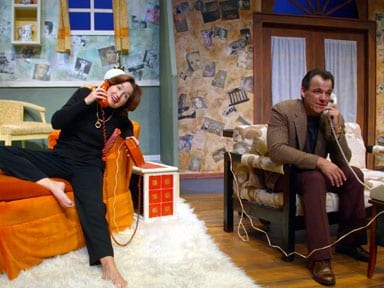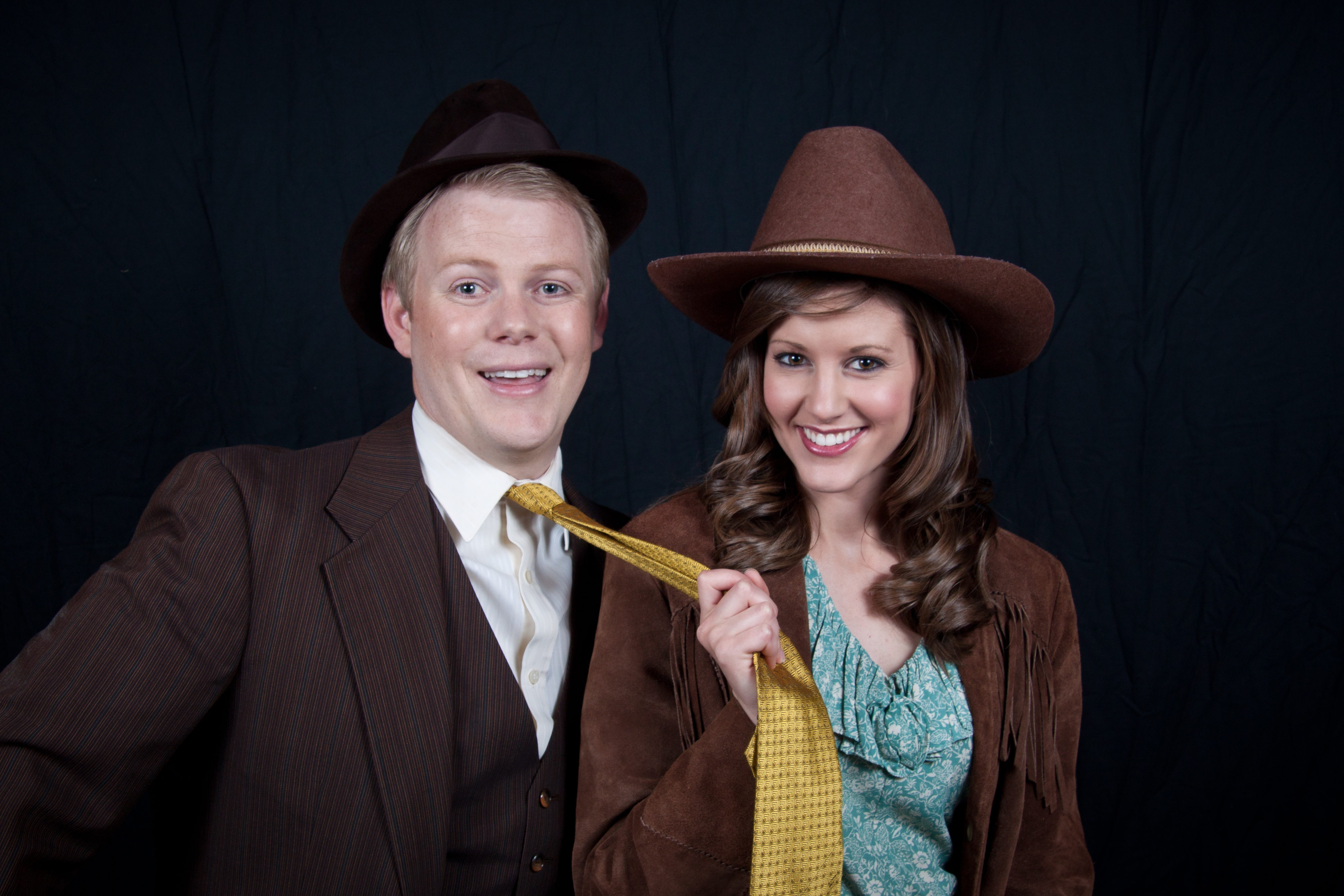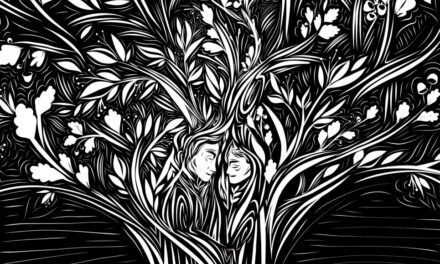CEDAR CITY — Chapter Two is the second installment of plays this year at the Neil Simon Festival. Originally produced in 1977, this play follows the lives of four different characters as they deal with loss through death, divorce, loss of passion, loss of love, and learning to love again. I would describe it as a serious drama laced with comedy.
The show does deal with significant adult themes, so be aware as you decide which shows are appropriate entertainment for you. In this production, director Zac Trotter has made the decision to set the events in the present day. This is a good decision that makes the story more relevant to the audience. From the way that communication now happens on cell phones, to the furniture on the set, to the jokes regarding modern day entertainment, I felt the director made excellent choices that added essential humor.
I also found myself impressed with the set design by Madeline Ashton. Having a show set in New York City always opens up my mind to the immediate criticism of the size of the apartments, because those of us who have lived there feel apartments are depicted as far too big and lavish for what the reality of city life is. Yet, Ashton put together a very realistic set with apartment sizes that depicted city life accurately. The New Yorker in me was pleased. I also appreciated how Ashton’s set was a natural addition that helped with the flow of the play, not a distraction by being showy.
 The play only has four characters, which means a cast must have the chemistry necessary to pull off the action, because one bad performance cannot be masked. Happily, these four actors built a fine plot, and were able to keep the audience engaged and enthralled. Alex Pizzo played Leo Schneider, younger brother to George Schneider, played by Ale Allred. Pizzo’s character is stuck in a seemingly passionless marriage, and yet he appears desperate to help his brotherwho had recently lost his wife and love of his life—find love. This is a difficult characterization to pull off, because it seems rather contradictory to be pushing love on someone when you do not have it yourself. However, Pizzo was able to play his part with an ability to show that he had the desire for companionship and the belief that it was possible and beneficial, even if he did not go about it in the most seemingly healthy ways. Allred, as George, also delivered a strong performance, especially in his portrayal of distractedness that is often common after loss. From his missing out in conversation to his constant searching for his cell phone, I could tell that while he wanted to be organized and adapted, his heart was still mourning the loss.
The play only has four characters, which means a cast must have the chemistry necessary to pull off the action, because one bad performance cannot be masked. Happily, these four actors built a fine plot, and were able to keep the audience engaged and enthralled. Alex Pizzo played Leo Schneider, younger brother to George Schneider, played by Ale Allred. Pizzo’s character is stuck in a seemingly passionless marriage, and yet he appears desperate to help his brotherwho had recently lost his wife and love of his life—find love. This is a difficult characterization to pull off, because it seems rather contradictory to be pushing love on someone when you do not have it yourself. However, Pizzo was able to play his part with an ability to show that he had the desire for companionship and the belief that it was possible and beneficial, even if he did not go about it in the most seemingly healthy ways. Allred, as George, also delivered a strong performance, especially in his portrayal of distractedness that is often common after loss. From his missing out in conversation to his constant searching for his cell phone, I could tell that while he wanted to be organized and adapted, his heart was still mourning the loss.
 Melissa Nield plays Jennie Malone, whose marriage has just ended in divorce. Personal circumstances immediately attached me to the character of Jennie, and I found myself quite empathetic to the way Nield chose to portray Jennie. From her desires to be alone, to her sorrow written on her face, to her hope for a better future, Nield portrayed exactly what a person going through the loss of divorce would feel. There is a moment near the end of the second act where Nield performs a monologue where she recites that she is a wonderful catch, and she is proud to be herself. It’s a speech that, as a divorced woman, I wish to be able to perform because it captures the situation of almost any divorced woman perfectly. The strength and conviction in that scene was impressive.
Melissa Nield plays Jennie Malone, whose marriage has just ended in divorce. Personal circumstances immediately attached me to the character of Jennie, and I found myself quite empathetic to the way Nield chose to portray Jennie. From her desires to be alone, to her sorrow written on her face, to her hope for a better future, Nield portrayed exactly what a person going through the loss of divorce would feel. There is a moment near the end of the second act where Nield performs a monologue where she recites that she is a wonderful catch, and she is proud to be herself. It’s a speech that, as a divorced woman, I wish to be able to perform because it captures the situation of almost any divorced woman perfectly. The strength and conviction in that scene was impressive.
Rounding out the cast was the character of Faye Medwick, Jennie’s best friend, played by Tatem Trotter. While this character could have easily been cast aside as nothing more than someone for Nield to play off of, Trotter added a great deal of depth to the character by the empathy she showed for Nield, as well as interactions with the other characters (which I cannot reveal because, again, they would be plot spoilers).
Perhaps the best part of the show was the fact that these actors made it feel so real. There were moments when Allred and Nield were arguing that felt so real it was almost uncomfortable, as if I were an intruder in a home watching a couple struggle to save their relationships and their self-worth. I found myself wanting to help them resolve their pain. But—as any good therapist would advise—I knew that my place was to just sit, watch, and hope they could come to the solution themselves. The emotions range from ecstasy to utter depression and back again, just as real as in the days of the lives of those in the audience. It also reiterated the knowledge that the best thing for people is to do things in their own way, and in their own time. The show was an inspiring effort to bring humanity to the very real difficulties faced in the loss of love.






